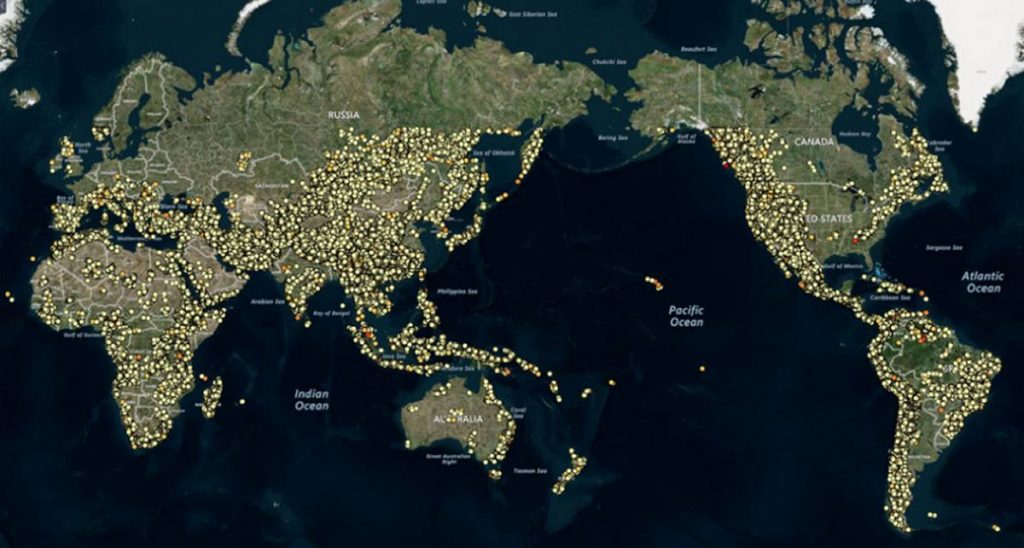
Building on research carried out for Australia, ANU researchers say they have identified more than enough potential pumped hydro storage sites globally to make a world running on 100% renewables-based electricity a reality.
Pumped-hydro energy storage (PHES) involves a pair of reservoirs established at different heights that are connected by a tunnel. Depending on water availability, the reservoirs may be covered to reduce evaporation.
In a primarily renewables-based PHES scenario, water is pumped through pipes from the lower reservoir uphill to the top reservoir when wind and solar energy is abundant. The water is released from the top reservoir and channeled past a turbine to generate electricity when it is needed. The water then makes its way to the lower reservoir and the cycle is repeated. In a seawater PHES system, a lower reservoir doesn’t need to be constructed as it uses a naturally occurring one – the ocean.
Among the advantages of pumped hydro energy storage is it can go from zero to full power very quickly.
Back in 2017, ANU researchers found 22,000 potential PHES sites across Australia, only a very small portion of which they say would be required to support a 100% renewables-based electricity system. The new work extends to the rest of the world, identifying upper/lower reservoir pairs and the connecting tunnel. In their latest work, the researchers have narrowed down the potential sites in Australia to the best 3,000 candidates.
The 530,000 short-term off-river pumped-hydro energy storage (STORES)1 sites identified globally, all of which are outside national parks and urban areas, each have a storage potential in the range of 2 to 150 GWh and could collectively store 22 million GWh.
But of course, not all of the sites would be viable (or even needed). While acknowledging the sites identified have not been subject to geological, hydrological, environmental, heritage, commercial feasibility and other necessary studies, Dr. Matthew Stocks from the ANU Research School of Electrical, Energy and Materials Engineering (RSEEME) says only a small fraction would be required to support a 100 per cent renewable global electricity system.
“We identified so many potential sites that much less than the best one per cent will be required,” he said.
As for the economics of pumped hydro storage generally, co-researcher Bin Lu states:
“Pumped hydro accounts for 97 percent of energy storage worldwide, has a typical lifetime of 50 years and is the lowest cost large-scale energy-storage technology available,”
Instructions for accessing the maps of the identified sites and other related information can be found here.
Pumped hydro storage projects have caught the attention of Australia’s Federal Government, with PHES making up half of the projects shortlisted under the Morrison Government’s Underwriting New Generation Investments program.
Footnotes
- Typically delivering maximum power from five to 25 hours ↩

 RSS - Posts
RSS - Posts



I have seen a few articles on pumped hydro that mention the need for tunnels. I am not just being pedantic but is there some reason why a tunnel is preferred to a big pipe? Surely a 6 metre reinforced concrete pipe would be cheaper than boring a tunnel. It might just be semantics.